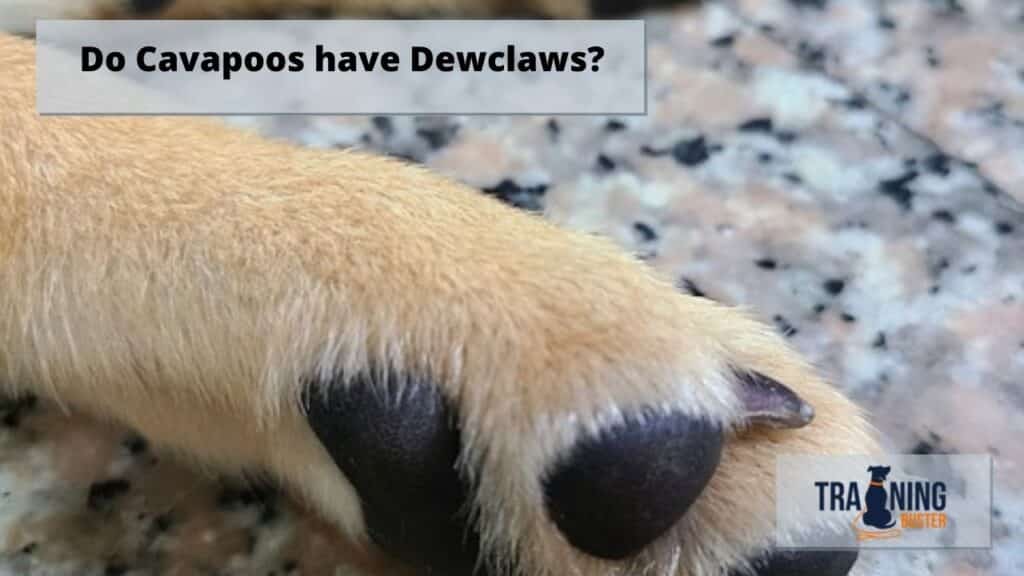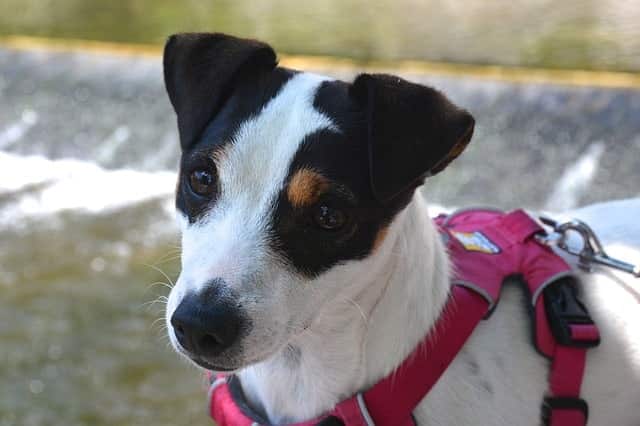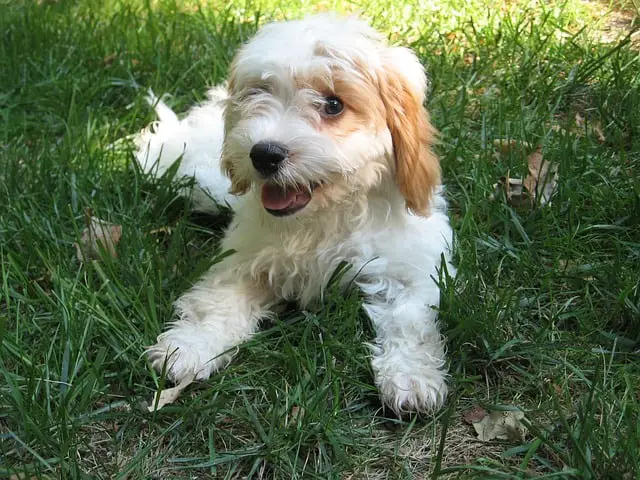
With dewclaw removal at a young age so routine across North America, many owners are unsure whether their dog ever had dewclaws and which dog breeds even have dewclaws.
So, do Cavapoos have dewclaws? If so, why do they have them, and what do they use them for? Why do breeders remove dewclaws? With so many benefits to dewclaws and yet many disadvantages, it’s hard to know what to do about your Cavapoo’s dewclaws. So, read on to find out more about dewclaws dews, and don’ts.
What are dewclaws?
Dewclaws are the claws a dog has on what would be considered its ‘thumb’ area. Perhaps you’ve noticed a dog using them to stabilize a treat or bone they were eating or guard a ball or other toy. These thumbs that dogs like the Cavapoo have are sometimes called digits or vestigial structures.
There is nearly always a claw attached to these doggy ‘thumbs’. This claw may not be as apparent as a Cavapoo’s other claws, hidden by their fluffy fur. These claws sometimes get removed from a dog shortly after birth, especially in the United States.
Dewclaws have innumerable benefits and use for your Cavapoo. Your Cavapoo’s dewclaws can help them run, jump, climb, grip their toys and treats, help them defend themselves, and even enable them to pull themselves out of icy ponds!
How many dewclaws can Cavapoos have?
Most dog breeds are born with two fore dewclaws. These claws are present on a dog’s front paws and help them to run or climb. It’s mainly smaller dogs like the Jack Russell Terrier or Chihuahua that have only two dewclaws. That being said, large breeds like the Labrador or Poodle also always have mere front dewclaws.
Large breeds like the Australian sheepdog, Icelandic sheepdog, Estrella Mountain dog and Bernese mountain dog also have hind dewclaws. Sometimes, these large dogs even have double hind dewclaws! Hind dewclaws are so desirable in these large working breeds that they often form part of the breed standard.
Some people think these dogs’ hind dewclaws result from having more wolf genes in their DNA. Some scientists call hind dewclaws “Polydactyl Mutations”.
How can I look after my Cavapoo’s dewclaws?
However many or few dew claws your Cavapoo has, taking care of their dewclaws is much the same as with their other claws – keep them trim by filing and cutting them regularly. Dewclaws can quickly become long and curl over, so cut your Cavapoo’s dewclaws more often than their main claws but don’t overdo this.
When your Cavapoo runs, their dewclaws come into contact with the ground on every step. If your Cavapoo runs on hard surfaces, this is an excellent way to grind their dewclaws down. But it would be best if you minimized how much your Cavapoo runs on grassy, mossy surfaces or rugs, which could yank their dewclaws out.
If you have a yard, keeping your grass short and free from moss will go a long way in protecting your Cavapoo’s dewclaws. You can also ban your Cavapoo from rooms with particularly plush mats, and make sure your Cavapoo’s bedding, toys, and towels have no loose weaves, holes, or tassels which long claws could get caught on.
Why doesn’t my Cavapoo have dewclaws?
Did you go to view your Cavapoo puppy in their litter, only to find that none of the puppies has their dew claws? What’s going on? Have their claws just not grown yet, or will this particular Cavapoo litter never grow claws?
Well, it’s true that some Cavapoo puppies don’t possess the gene for dewclaws and will never grow them. But it’s more likely that the Cavapoos’ breeder has opted to remove the dewclaws from the puppies.
If present, many breeders will remove Cavapoo puppies’ claws at around 1-3 days old! People are divided about the necessity and ethics of this procedure, but at this early stage in their lives, Cavapoo puppies have no nerve endings in this area to feel pain. It’s comparable to tail docking or ear cropping, though it is considered more humane than these procedures.
Breeders do this because they fear owners won’t cut their Cavapoo’s dewclaws when they adopt them, leading to injuries and health problems. Dewclaws are also removed early for esthetic reasons, especially if a dog is to be shown. Some Cavapoos do go on to grow dew claws again later in life.
Should I remove my Cavapoo’s dewclaws?
But why would anyone carry out this seemingly unnecessary procedure? A Cavapoo’s dew claws have plenty of advantages — surely it would be better to leave them on, right?
Yes, a Cavapoo’s dewclaws do have a vast amount of advantages, or else why would they have evolved to have them? But an American Bulldog’s dewclaws do also bring a few major health concerns.
Whether they have dewclaws on their forepaws or on their hind legs, too, though you may keep them trim and tidy, a Cavapoo whose dewclaws are intact continually runs the risk of having their dew claws quite severely injured.
That being said, the removal of your Cavapoo’s dew claws comes with its risks and health threats, too. For example, dogs who have had their dewclaws removed are more likely to develop arthritis in later life. This is thought to be because the muscles and joints that should be working with the dewclaw are now left to atrophy.
On top of this, dewclaws removed shortly after birth sometimes grow anyway, nullifying any reasons for removing them so early.
But if you don’t remove your Cavapoo’s dewclaws, the claws can easily curve down into your Cavapoo’s pads, leading to infection. Your Cavapoo’s dewclaws can also scratch you as you play together or get yanked out on doorframes, blankets, and moss. It’s also tedious to maintain your Cavapoo’s dewclaws, and your Cavapoo may dislike having them trimmed.
So, with so many reasons for and against dewclaw removal, it’s up to the owner to choose what is best for their Cavapoo and their lifestyle. There are always stretches and exercises you can teach your Cavapoo if they don’t have dewclaws, or you can keep their dewclaws short if they do have them.


